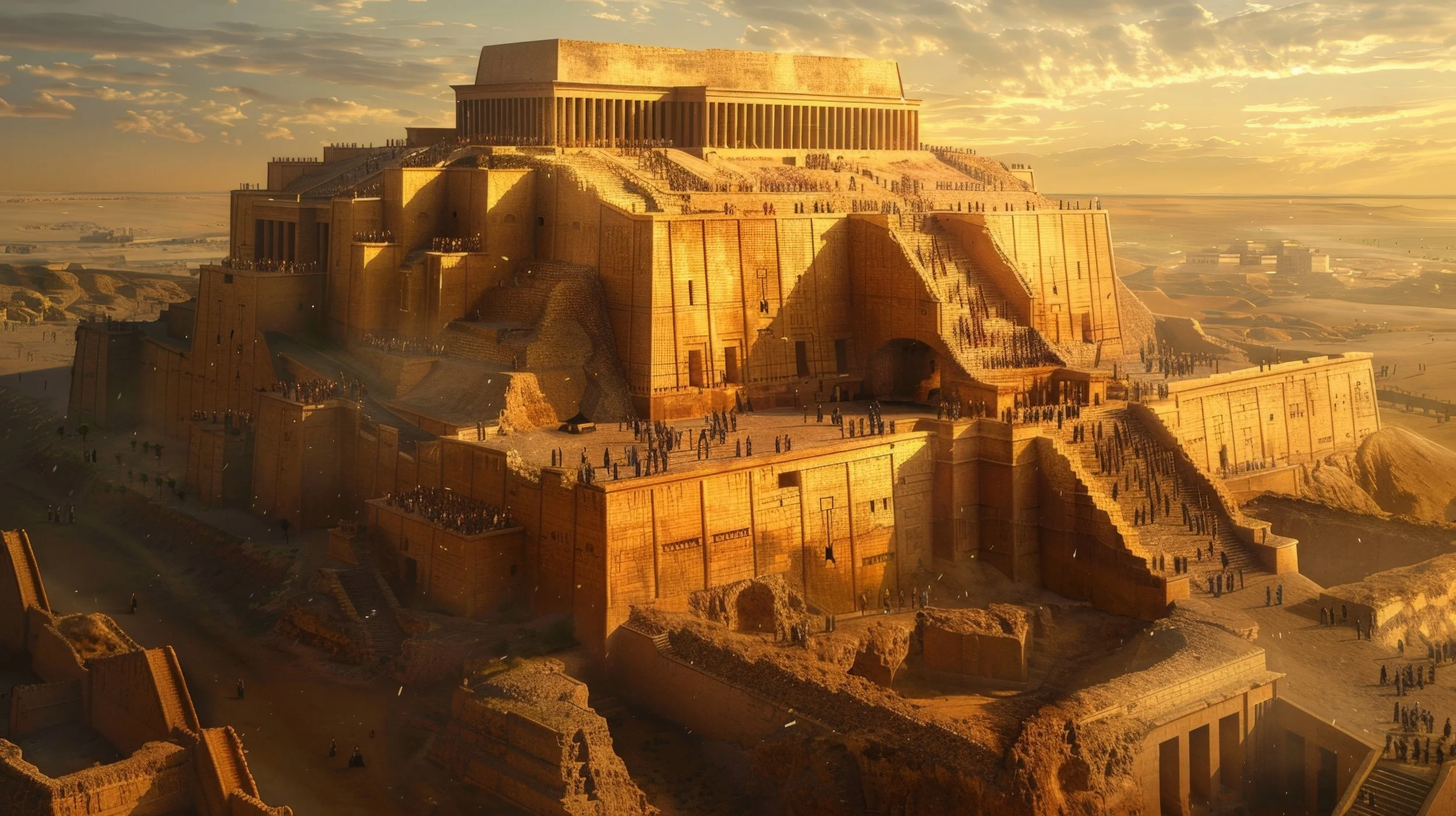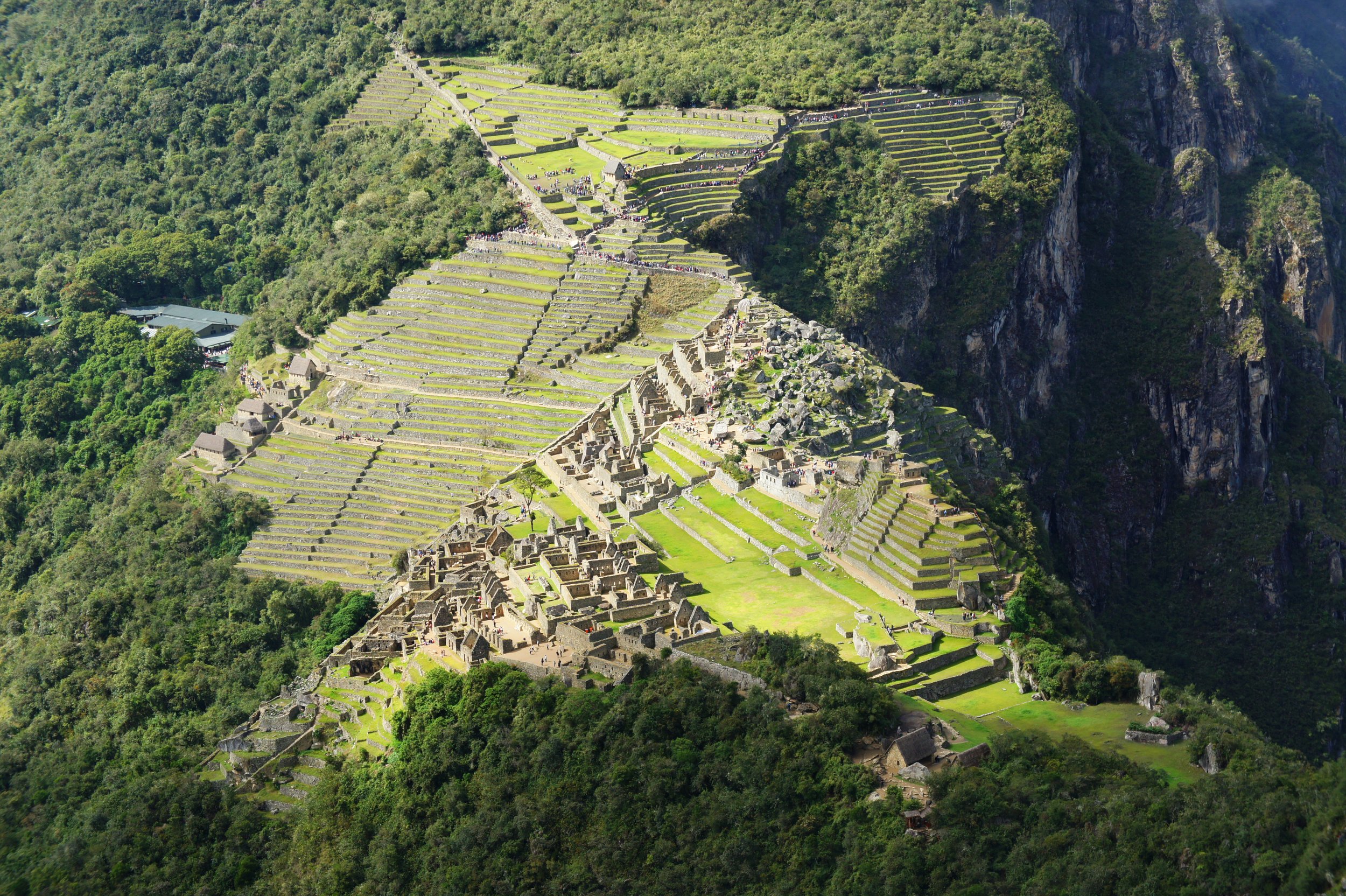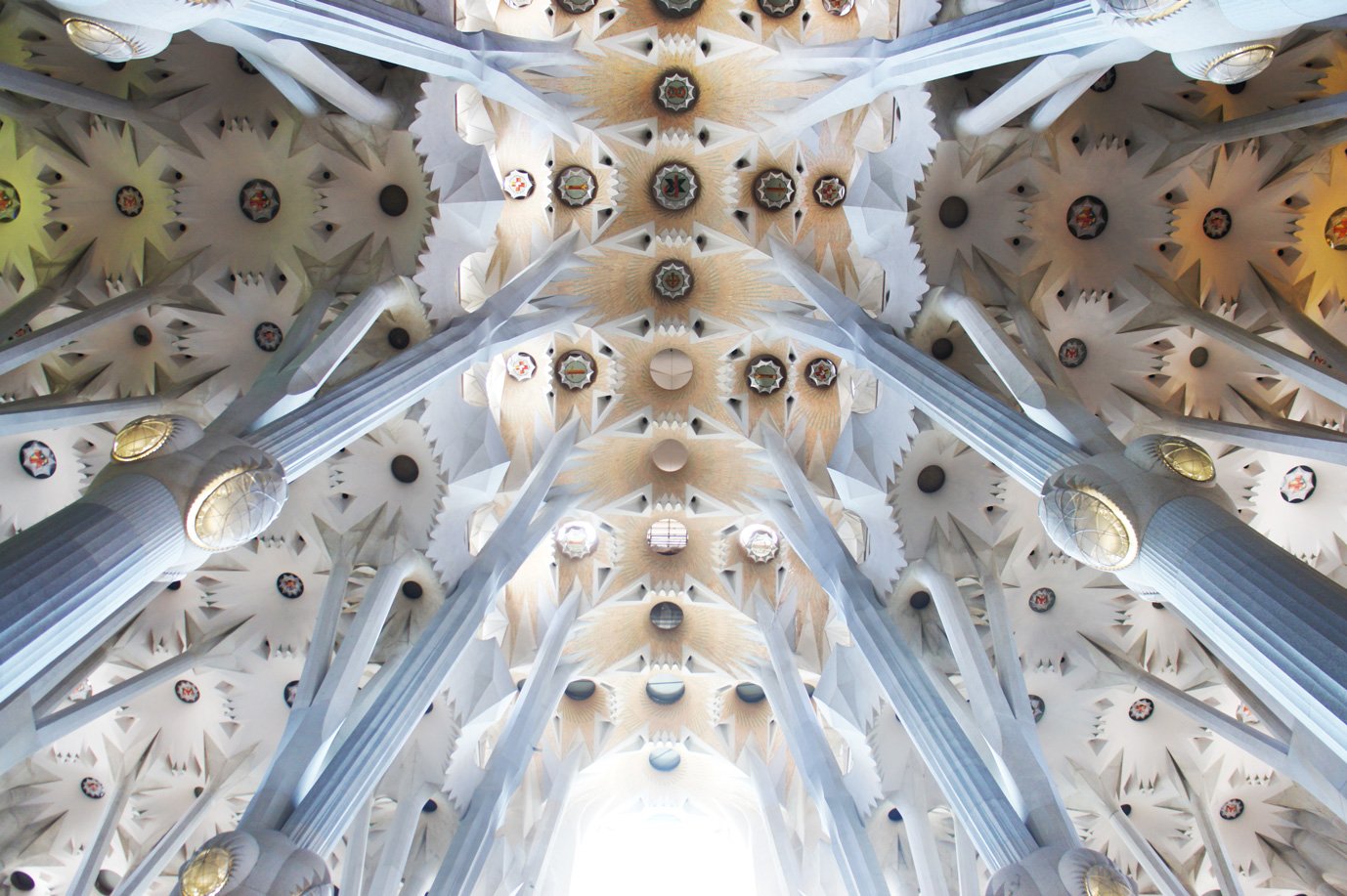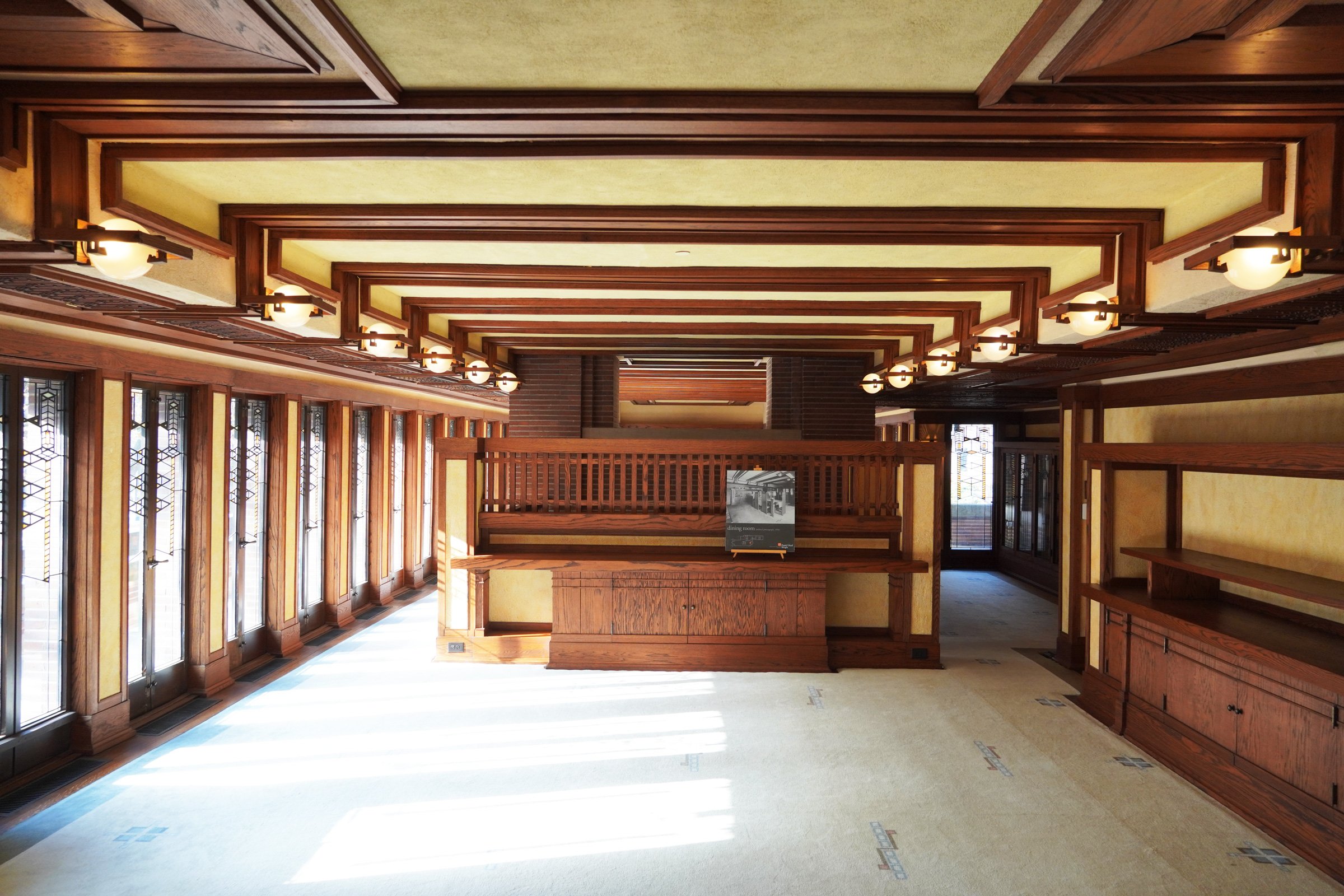A Brief Architectural and Archaeological History of Stonehenge
Photograph of Stonehenge shot from the Heel Stone. Photograph Copyright by Mitchell Rocheleau 2025
Imagine traversing the plains in the southwest of neolithic Britain when, from off in the distance, over the crest of a green meadow, a megalithic structure begins to arise on the horizon. Stones three times the size of a human stand vertically in the landscape, spanned with equal-sized lintels. This creation would have been captivating, unlike anything seen before, and undoubtedly interpreted as the work of the gods.
This enigmatic Neolithic monument offers a window into our past and the lives of our ancestors. Stonehenge provides insights into their values, societal norms, and psychology. It unveils their astonishing level of sophistication, intricate communication networks, complex collaboration methods, and a deeply intuitive community with a profound understanding of materials, construction techniques, ecology, and astronomy. This megalithic marvel has the potential to enlighten us about our own journey and the evolution of our species.
My first encounter with Stonehenge was a mix of unease and familiarity, a strange echo of something curiously known. This mix of emotions sparked a desire to delve deeper into its history, origins, and the ideas behind its existence. Stonehenge offers a glimpse into the minds of our ancestors and a deeper understanding of the human condition.
The Landscape and Spirituality
Stonehenge was constructed during a major shift in Britain's history towards the end of the Neolithic period. Rapid social, economic, and intellectual development occurred at this time in the human species. In about 4000 BC, the first farming communities arrived along the south coast of Britain. The advent of farming allowed societies to gain greater stability, security, and predictability compared to the hunter-gatherer lifestyle of their predecessors. With agriculture, people could amass and store excess food for future use.
Gradually, sites similar to the early versions of Stonehenge began to dot the landscape. Stonehenge took shape around 3000 BC. These sites, though smaller in scale and lacking the grandeur of Stonehenge's megaliths, played a crucial role in bolstering community stability. These monuments provided early societies with a physical anchor to build their communities and belief systems around, fostering evolution, innovation, and growth. Creating a physical monument further reinforced the idea of a stable, united, unique, and capable community, instilling hope and prompting contemplation for the past and future.
The monuments played a vital role in developing their religious and spiritual beliefs, which helped communities stay united. Their beliefs, connections, and shared rituals gave communities a foundation of trust, identity, cohesion, and predictability. As anxiety and fear-based psychological states subsided and their nervous systems calmed, people could spend time thinking about things other than mere survival. They could use their minds to reflect, explore their inner psychology, imagine, and contemplate the world around them.
The manifestation of this psychological relief and increased awareness began with the creation and expression of their creativity in small things such as pottery, jewelry, and more permanent housing settlements, eventually evolving into much larger landscape manipulations and the erection of stone monuments.
These people developed rich inner spiritual and psychological connections between each other and the natural world. Their shared beliefs were the undercurrent that guided every aspect of their lives. A deep awareness and sensitivity to their inner worlds and intuitions gave them an edge that undoubtedly aided their survival and procreation of our human race.
Detail photograph of Stonehenge showing the trilithons. Photograph copyright 2025 by Mitchell Rocheleau
The structures and landscapes they created reflected their deep spirituality and connection with the natural world. Just as the structures we build today reflect the values of our contemporary society, our prehistoric ancestors' structures reflected theirs just the same.
Stonehenge and other megalithic sites of the Neolithic era reflect a grounded, intrinsic, and naturalistic set of values catering to our most primitive and fundamental human needs. It is precisely this that interests me and has gained my attention. Studying Stonehenge and raising awareness of it allows our contemporary society to notice, contemplate and perhaps question our modern lives and the environment, society, and values we have created for ourselves.
In a world where many people seem to be losing connection with themselves, their communities, and nature, we must reflect on our past, taking note of the belief system, values, and ways of life, our ancient ancestors practiced to return to vitality and thrive as a species. Let's begin by examining the early history and context of Stonehenge.
Photograph of Stonehenge showing the trilithons. Photograph Copyright by Mitchell Rocheleau 2025
The Site, Why the Salisbury Planes
Archaeological excavations suggest that humans inhabited the areas around the Salisbury planes shortly after the end of the last ice age. We have evidence of ancient wooden henge structures that date back to roughly 8000 BC. When farming developed, the ancient people saw the open plains as prime areas for agriculture. Due to the nature of the soil, large groves of trees had difficulty growing on the plains; therefore, no clearing or burning of forests was needed to farm the land.
A natural geological feature near Stonehenge seems to have prompted these early people to endow the site with a specific spiritual or astrological significance. The outer landscape ditch at Stonehenge is interrupted by a connection with a natural geological gully. It is believed to result from sizeable glacial movement during the ice age. The gully runs precisely on a northeasterly orientation, aligned directly with the sunrise and sunset of the two annual solstices. This natural avenue must have been visually striking, with bright white chalk lining its path and seemingly intentional alignment with the sun patterns. This alignment suggests a sophisticated understanding of astronomy and likely played a significant role in the spiritual and ceremonial significance of the site.
Construction of the Ditch Begins
After deeming this area significant, the builders began the first phase of construction on Stonehenge around 3000 BC, including only the circular ditch and bank surrounding the site. There were several other henge sites in the area around the time, so this type of landscape monument would not have been unique. Its use was most likely for burials and ceremonies dedicated to the afterlife.
Some research suggests that the bluestones were erected in this first construction phase; however, they were not in the location where we see them today. In their first incarnation, they would have been spaced evenly around the inside ring of the ditch. Inside the bank was a circle of large pits known as the Aubrey Holes, where either upright wooden posts or small upright stones stood.
The ditch has been critical in providing dating information for Stonehenge. Large amounts of organic materials, such as antler picks and animal bones, could be carbon-dated. These tools were most likely used to carve out the ditch. Colonel William Hawley excavated a significant portion of the ditch in the 1920s. He described it as a 'string of badly-made sausages,' a colorful description that gives a vivid image of the ditch's appearance during excavation.
Just inside the bank, Hawley found fifty-six pits. These are called the Aubrey Holes. Upon discovering the Aubrey Holes, he began excavating thirty-two of them, whereupon he found many small piles of cremated human ashes and bones.
Some of the humans were carbon-dated, yielding results of about 3000 BC, suggesting that the Aubrey Holes would have been constructed around the time the ditch was. Therefore, in its earliest form, Stonehenge may have been a cemetery. According to many archeologists, Hawley's original excavation pit was not studied thoroughly. The pit was re-excavated in 2008, and the human remains were documented. The remains of approximately 60 individuals, including men, women, and children were found.
Detail photograph of Stonehenge showing the trilithons. Photograph copyright 2025 by Mitchell Rocheleau
Significant Activity on Site 2500 BC
The site underwent massive change in 2500 BC, when the large megalithic Sarsen stones were erected. Massive activity and use seemed to occur at the site around this time. We know when the stones were erected on site from carbon dating of antler picks and other organic material found in the holes around the sarsen stones. Around this time, the bluestones were rearranged and repositioned to form a smaller diameter arrangement closer to the large Sarsen stones.
Two primary types of stones are used at Stonehenge: bluestones and sarsen stones.
Detail photograph of Stonehenge. Photograph copyright 2025 by Mitchell Rocheleau
Sarsen Stones
Sarsen stone occurs naturally across the greater area around Stonehenge. Most archeologists believe that the Sarsen stones at Stonehenge came from Marlborough Downs, a site just 19 miles north of Stonehenge in north Wiltshire. These large sarsen stones were distributed throughout the Wiltshire countryside by the glacial movement of the Ice Age.
Sarsen stone is an exceptionally hard type of sandstone. When exposed to the elements, the silica in the sandstone becomes almost cemented, hardening more over time. However, it is pink and softer when initially quarried, making it easier to shape.
Sarsen stones were used to make the trilithons at Stonehenge. These are the arrangements of three stones, including two vertical pillars and a horizontal lintel. Some of the Sarsen stones weighed over 35 tons.
Detail photograph of Stonehenge showing the trilithons. Photograph copyright 2025 by Mitchell Rocheleau
Bluestones
Recent investigations have focused on the bluestones at Stonehenge. The bluestones are the smaller, human-scaled dolerite stones that form the inner circle and horseshoe shape. These typically weigh around 2 tons. The blue stones are fascinating due to the distance they were transported from West Wales to the Salisbury plains.
The topic of how they were transported is the point of debate and contention. Some believe that they were carried by glacial movement from Wales. However, there is minimal geological evidence to support this theory. Others think they were transported by sea through the Bristol Channel. The most logical theory supports transporting the stones by land. Several different land routes have been mapped out, showing possible candidates for the most navigable passage. Transporting the bluestones by land also fits nicely with the concept of procession and ceremony, which seemed to be part of the culture at the time. Transporting the stones would have established connections with different tribes along the way. It would have fostered support from their leaders in accomplishing an honorable undertaking. Gifts, treaties and goods would have been exchanged. It is easy to see the benefits of transporting the stones via land. This makes the procession of the stones contribute to possibly one of the underlying purposes of Stonehenge, which was community building.
The bluestones provide a much deeper understanding of the monument's origins. Mike Parker Pearson has done extensive research on the bluestones and uncovered evidence that suggests that the stones were not just quarried in West Wales; he believes that they were part of an earlier Stonehenge monument located in western Wales, then transported and reused at Stonehenge.
He and his team of archeologists, scientists and students spent several years excavating different sites in Wales near the quarries where the bluestones are suspected to have originated. They discovered a site where a large circle, the same diameter as Stonehenge, was left with empty holes almost exactly the size of the blue stones at Stonehenge. This discovery suggests that the bluestones at Stonehenge are a second-hand monument that was moved from its original location in Wales to the Salisbury planes.
This opens the possibility of a large migration of people traveling from Wales to the Salisbury Plane around 3000 BC. Genetic testing on the human bones at Stonehenge and Wales from this time supports the idea of migrating people from the western region of Wales.
Detail photograph of Stonehenge showing a trilithon with the mortise and tenon connection. Photograph copyright 2025 by Mitchell Rocheleau
The Avenue and Stonehenge's Place Among a Wider Landscape
When we think of Stonehenge, most people think of only the upright megalithic Sarsen stones and horizontal lintels arranged in a circle on the Salisbury Plain. We have discovered that this is only a small part of a larger prehistoric building project. Stonehenge was part of a larger landscape development complex centered on the River Avon. The entire Salisbury Plain is filled with ceremonial landscape monuments.
Archaeologists believe the natural chalk ridges running northeast in/out of Stonehenge started to develop and were paved around 2300 BC. Today, they are understood as a ceremonial pathway from the River Avon to Stonehenge that connects a site called Durrington Walls. This excavation prompted inquiry, interest, and the discovery of additional landscape monuments all around the area.
Detail photograph of Stonehenge showing the trilithons. Photograph copyright 2025 by Mitchell Rocheleau
Wood vs Stone Theory and Durrington Walls
Mike Parker Pearson, and an archeologist from Madagascar named Ramilisonina (Ramil), developed a theory about Stonehenge and Durrington Walls, that helps give insight into the way these two sites were used. Durrington Walls is a settlement down the river from Stonehenge.
In 2005, the site was excavated, and it revealed that it was a thriving settlement of small square houses. The total area of the settlement is about 42 acres. Nearly eighty thousand animal bones were discovered at Durrington Walls, suggesting evidence of neolithic eating activities and possibly large celebratory feasts. Durrington Walls was clearly a place for living.
Pearson and Ramil hypothesize that the architectural materials used to construct the respective monuments (stone for Stonehenge and wood for Durrington Walls) symbolized and correlated to their uses. The choice of constructing Stonehenge from Stone, represents death and the afterlife of their ancestors. Since their ancestors are permanent, stone reflects this condition.
Detail photograph of Stonehenge showing a trilithon with the mortise and tenon connection. Photograph copyright 2025 by Mitchell Rocheleau
Likewise, wood was used at Durrington Walls because it was a settlement where life occurred. It was a large village with homes, therefore reflecting the temporal nature of life through the use of wood. Wood rots, decays, and returns to the earth just as human life does.
Pearson's team set out to prove this hypothesis through excavations. They discovered that there was a route connecting the two sites, suggesting a ceremonial burial process, where the dead were taken on the route from Durrington Walls, down to the River Avon, through the landscape, up a ceremonial avenue to Stonehenge where the cremated remains of the deceased would be buried.
The sophistication and use of materials to represent the cycles of life from our Neolithic ancestors, if accurately interpreted, is fascinating and enlightening. Even in these early times, they understood and harnessed the intuitive symbolism of materials, an architectural practice still critical in our contemporary world. It shows they used metaphors and symbols to represent their thoughts and ideas. Writing began evolving in ancient Mesopotamia around 3400 BC, illustrating a similar capacity to use symbols to convey thoughts. This concept was similar at Stonehenge and Durrington Walls, except it was communicated through architecture.
Stonehenge and Astronomy
Stonehenge was used to identify astronomical and solar patterns. It operated as a calendar to notify the society where they were in the annual seasonal cycle. William Stukely was the first to discover Stonehenge's relationship with the midsummer solstice sunrise. The midwinter sunset and midsummer sunrise were identified by looking on the axis when standing at the heel stone, through the Great Trilithon and the sarsen circle. When the sun hit this point in Stonehenge, and aligned with the opening in the stone, the people knew that the weather was about to change, and the days would get longer or shorter. It is easy to see how this sort of notification and knowledge would be helpful in an agrarian community that depended on the harvest to make it through the winter. Although incredibly practical, this was most likely only a part of the reason why Stonehenge was built.
Detail photograph of Stonehenge showing a trilithon with the mortise and tenon connection. Photograph copyright 2025 by Mitchell Rocheleau
An Evolution and Amalgamation of Monuments
Stonehenge was not built by a localized group of people in a few years. Instead, it can be interpreted as a series of monuments combined, refined, modified, and perhaps even relocated over large distances over centuries by many different groups of people.
Many believe that distant civilizations across the Mediterranean Sea inspired the builders of Stonehenge, inspired the architecture and the builders at Stonehenge. However, from studying other monuments and sites around Britain during the time, we know the inspiration most likely came from structures on the British Isles. Similar construction techniques, methods, and ideas are found in several prehistoric sites across Britain and Wales.
Detail photograph of Stonehenge showing a trilithon with the mortise and tenon connection. Photograph copyright 2025 by Mitchell Rocheleau
Stonehenge and The Human Condition
Like many great pieces of architecture in history, Stonehenge was constructed by people with a strong desire to express their belief systems and customs. Because Stonehenge was not lived in, nor was it used as a defensible space, it must be rooted, at least to some degree, in a spiritual purpose.
As far as we know, these were not slaves or underpaid craftsmen who built Stonehenge; they were tightly bonded groups of people who shared similar views and voluntarily chose to express them creatively through the construction of architecture. This is a testament to the capability and power of the collective human mind. Stonehenge was at the beginning of a tradition where belief resulted in building.
As we continue to study Stonehenge, an increasing amount of information is surfacing, giving us a clearer picture of the monument and a deeper understanding of our Neolithic ancestors. Due to its material nature, architecture remains a critical tool for understanding our species and how we got to where we are today. Unfortunately, we cannot study the minds of ancient people. However, their minds are reflected in the objects that they created and built. It is in this fact that my fascination lies with architecture as a tool to better understand ourselves and the human condition.
The Purpose
Interest in Stonehenge has gained momentum and a growing following in the last two decades. Our information is constantly evolving, changing with each new find and discovery. We mustn't stay fixed or dogmatic in our interpretations of this monument. We should be open-minded and willing to discuss all hypotheses.
Please note that I am not an archeologist or an expert on Stonehenge; I am speaking about the monument based upon my time walking and observing the site, talking to experts, and reading about their findings. I'm looking at the monument from an architect's perspective, seeking insight into what architecture and our built environments can reveal about the human condition. The purpose being to find environmental conditions that support the thriving of our species. My research attempts to uncover some of these fundamental truths and reintegrate them into my architectural work. That being said, please excuse any oversights or errors in my understanding of the history or archeology of the site and those related topics outside of the field of my expertise.
Detail photograph of Stonehenge with human scale figure in the background to show scale. Photograph copyright 2025 by Mitchell Rocheleau
Bibliography
Parker, Michael. Stonehenge: A New Understanding: Solving the Mysteries of the Greatest Stone Age Monument. New York, The Experiment, 2014.
Pitts, Mike. How to Build Stonehenge. Thames & Hudson, 17 Feb. 2022.
Pryor, Francis. Stonehenge: The Story of a Sacred Landscape. New York, Pegasus Books, 2018.
Richards, Julian C, and English Heritage. Stonehenge. London, English Heritage, 2013.
Photograph of Stonehenge plan showing the different types of stone used. Photograph Copyright by Mitchell Rocheleau 2025
Detail photograph of Stonehenge showing a trilithon with the mortise and tenon connection. Photograph copyright 2025 by Mitchell Rocheleau












































Principal and Architect of ROST Architects, Mitchell Rocheleau, discusses the significance of The Grand Louvre designed by Architect I.M. Pei, the history of the Louvre, design process, design theory and ideas behind the project.